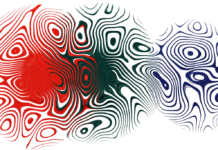The Industrial Internet of Things (IIoT) represents a transformative paradigm in the realm of industrial operations, combining traditional manufacturing processes with modern data analytics and the connectivity of the Internet of Things (IoT). IIoT introduces a new level of intelligence, efficiency, and connectivity to industries, allowing for smarter decision-making, predictive maintenance, and improved overall performance. Here’s a comprehensive exploration of IIoT, along with ten key aspects to understand about this pivotal technology:
1. Definition of IIoT: The Industrial Internet of Things (IIoT) refers to the integration of industrial processes with the capabilities of modern IoT technologies. It involves the use of connected devices, sensors, and intelligent systems to gather, analyze, and exchange data in industrial settings. IIoT aims to enhance efficiency, productivity, and decision-making across various industries, including manufacturing, energy, healthcare, and transportation.
2. Connectivity and Sensors: At the core of IIoT is the concept of connectivity. Industrial devices, machines, and sensors are equipped with communication capabilities to share real-time data. These connected sensors form a network, creating a digital thread of information that provides insights into the performance and status of industrial assets. This connectivity is fundamental to enabling data-driven decision-making and automation in industrial processes.
3. Data Analytics and Edge Computing: IIoT generates vast amounts of data from sensors and devices. Data analytics, coupled with edge computing, plays a crucial role in extracting valuable insights from this data. Edge computing involves processing data closer to the source (at the edge of the network) rather than relying solely on centralized cloud servers. This approach reduces latency, enhances real-time analytics, and is particularly important for time-sensitive industrial applications.
4. Predictive Maintenance: One of the key benefits of IIoT is its ability to enable predictive maintenance strategies. Connected sensors monitor the health and performance of industrial equipment, detecting early signs of wear and potential failures. Predictive analytics algorithms analyze this data to predict when equipment is likely to require maintenance, allowing organizations to schedule maintenance activities proactively, reduce downtime, and extend the lifespan of assets.
5. Cybersecurity in IIoT: As industrial systems become more connected, cybersecurity becomes a critical consideration. IIoT introduces new attack surfaces and vulnerabilities that need to be addressed to safeguard critical infrastructure. Robust cybersecurity measures, including encryption, access controls, and regular security audits, are essential to protect IIoT networks and prevent unauthorized access or potential disruptions.
6. Interoperability and Standards: Interoperability is a significant challenge in IIoT due to the diverse array of devices and systems involved. Standardization efforts, such as the development of common protocols and communication standards, are crucial for ensuring seamless integration and communication between devices from different manufacturers. Standards enhance compatibility, promote scalability, and facilitate the widespread adoption of IIoT solutions.
7. Industry 4.0 and Smart Factories: IIoT is a key enabler of Industry 4.0, the fourth industrial revolution characterized by the integration of digital technologies into industrial processes. Smart factories leverage IIoT to create intelligent, interconnected systems where machines, processes, and humans communicate and collaborate seamlessly. This integration leads to increased efficiency, reduced waste, and the creation of more agile and adaptive manufacturing environments.
8. Human-Machine Collaboration: IIoT not only involves machines and devices but also emphasizes collaboration between machines and human operators. Augmented reality (AR) and virtual reality (VR) technologies, enabled by IIoT, allow workers to interact with machines, visualize data, and receive real-time insights. This human-machine collaboration enhances decision-making, training, and overall productivity in industrial settings.
9. Supply Chain Optimization: IIoT extends its impact beyond individual factories to optimize entire supply chains. Connected sensors and devices provide visibility into the entire supply chain, enabling organizations to track the movement of goods, monitor inventory levels, and make data-driven decisions to enhance efficiency. IIoT contributes to just-in-time production, reducing costs and minimizing waste in the supply chain.
10. Environmental Sustainability: IIoT plays a role in promoting environmental sustainability by enabling more efficient resource utilization. Through monitoring and optimization, industrial processes can reduce energy consumption, minimize waste, and lower the environmental impact of manufacturing operations. IIoT technologies contribute to the broader goal of creating more sustainable and eco-friendly industrial practices.
11. Role in Real-Time Decision-Making: One of the significant advantages of IIoT is its contribution to real-time decision-making in industrial processes. The continuous stream of data from connected devices and sensors allows operators and decision-makers to access up-to-the-minute information about the status of equipment, production processes, and overall operational performance. This real-time visibility empowers organizations to respond promptly to changing conditions, identify inefficiencies, and optimize processes on the fly, ultimately leading to improved operational agility.
12. Remote Monitoring and Management: IIoT facilitates remote monitoring and management of industrial assets and processes. Through connected sensors and devices, operators can monitor equipment performance, detect anomalies, and even perform certain maintenance tasks from a centralized control center. This capability is particularly valuable for industries with geographically dispersed assets, allowing for centralized control and reduced response times to operational issues.
13. Scalability and Flexibility: Scalability is a key characteristic of IIoT solutions, allowing organizations to scale their deployments according to the size and complexity of their industrial operations. Whether it’s a small manufacturing facility or a large-scale industrial complex, IIoT solutions can be adapted and scaled to meet specific needs. This scalability enhances flexibility, making IIoT accessible to a wide range of industries and applications.
14. Integration with Cloud Computing: IIoT often integrates with cloud computing to leverage the scalability, storage capabilities, and advanced analytics provided by cloud platforms. Cloud integration allows organizations to store and analyze large volumes of data generated by IIoT devices, facilitating historical analysis, machine learning applications, and the development of predictive models. Cloud-based IIoT solutions offer the advantage of centralized data storage and analysis.
15. Data Ownership and Privacy Concerns: The extensive data generated by IIoT devices raise concerns about data ownership, privacy, and security. Organizations must establish clear policies regarding the ownership and usage of the data collected from industrial processes. Implementing robust data security measures, anonymizing sensitive information, and complying with relevant data protection regulations are essential steps to address these concerns and build trust in IIoT deployments.
16. Return on Investment (ROI) Considerations: While IIoT brings numerous benefits, organizations need to carefully assess the return on investment associated with implementing IIoT solutions. Factors such as upfront costs, ongoing maintenance, and the potential productivity gains and cost savings should be considered. A well-planned IIoT strategy aligning with business goals and operational needs is crucial to achieving a positive ROI over time.
17. Overcoming Implementation Challenges: The implementation of IIoT solutions may face challenges such as legacy system integration, standardization issues, and workforce training. Overcoming these challenges requires a strategic approach, collaboration with technology providers, and investment in employee training programs. Clear communication about the benefits of IIoT and addressing concerns within the workforce are integral to successful implementation.
18. Interconnected Ecosystems and Partnerships: IIoT often involves the collaboration of multiple stakeholders in interconnected ecosystems. Organizations may need to establish partnerships with technology vendors, service providers, and other industry players to create a seamless IIoT ecosystem. Collaborative efforts can lead to the development of standardized solutions, interoperability, and the sharing of best practices within specific industrial sectors.
19. Regulatory Compliance: Industries deploying IIoT solutions must navigate regulatory frameworks related to data security, environmental standards, and safety regulations. Compliance with industry-specific and regional regulations is crucial to avoid legal implications and ensure that IIoT implementations adhere to the necessary standards. Organizations must stay informed about evolving regulatory landscapes and adjust their IIoT strategies accordingly.
20. Future Trends and Evolution: The landscape of IIoT is dynamic, with ongoing advancements and emerging trends shaping its evolution. Future trends may include the integration of artificial intelligence (AI) for advanced analytics, the development of more sophisticated edge computing capabilities, and increased emphasis on sustainability in industrial operations. Staying abreast of these trends is essential for organizations looking to continuously optimize their IIoT implementations and stay competitive in rapidly evolving industrial landscapes.
In summary, the Industrial Internet of Things (IIoT) represents a transformative force in industrial operations, ushering in an era of connectivity, intelligence, and efficiency. From predictive maintenance and data analytics to cybersecurity and Industry 4.0, understanding the key aspects of IIoT is crucial for organizations seeking to harness its potential for improved industrial performance and competitiveness.






















